During this past winter Claudia and I spent a lot of time in California’s Central Valley. This area isn’t known for its scenic beauty, but we found a lot of beauty there.
This was once a vast region of seasonal wetlands and flower-filled prairies, teeming with waterfowl, elk, pronghorn antelope, wolves, grizzly bears, and endless acres of springtime flowers. It’s estimated that 500,000 tule elk once roamed this region, and early visitors described flocks of wintering geese so large and dense they darkened the midday sky. This “American Serengeti” existed less than 200 years ago, in an area now occupied by farmlands, towns, and cities.
But small remnants of that wild past have been preserved in national and state wildlife refuges, state parks, and private duck clubs. Every year millions of ducks and geese migrate from as far as Siberia to spend the winter in the Central Valley, giving us a glimpse of what this area used to be like. Even during summer these marshes, woodlands, and fields have a quiet beauty all their own. But in winter, when birds arrive in vast numbers, they vibrate with life.
It’s quite a challenge to convey even a tiny bit of this splendor in photographs. There are no well-known landmarks or no iconic scenes to be captured. There are moments of indescribable beauty, but they’re fleeting, dependent on light, clouds, fog, and the movement of the animals. Even the angle of a bird’s wings can make the difference between a compelling photograph and an ordinary one.
To have any chance of capturing these transient moments requires thorough familiarity with my gear, and the ability to make instant decisions about framing and camera settings. It’s much more fluid and reactive than most landscape photography.
And I’ve had to learn to accept some frustration when things go wrong. In this type of photography it’s inevitable that you’ll make mistakes – wish you had the camera pointed over here instead of over there, miss the focus or exposure, forget to change some important camera setting, and on an on. There’s an endless list of things that can go wrong, but that makes it even more satisfying when things go right and everything somehow, miraculously, comes together.
Although different genres of photography often require some different skill sets, I think there are more similarities than differences. An eye for composition and a feeling for light help when photographing any subject. The many hours I’ve spent photographing wildlife (especially in the beginning of my career) have taught me to make quick decisions about framing, which sometimes helps immensely when photographing landscapes during fleeting moments of light.
For me, there’s an even deeper similarity between my landscape images and my wildlife photographs. Regardless of the subject or location, I’m always striving to make images that convey a feeling or mood. Although it’s fun to make an eye-to-eye portrait of an animal, or capture some interesting behavior, I’d really like to make photographs that capture even a tiny bit of the awe and wonder I feel in these Central-Valley marshes while watching the sun break through the fog as wave after wave of cranes take flight, or hearing the deafening roar of 20,000 geese flying overhead in the waning light of dusk. Conveying even a hint of those feelings in a still photograph is a daunting task, but one I feel compelled to pursue because of the connection I feel with these places and those moments.
We got to experience many of those magical moments this past winter. We found a great variety of birds, and some wonderful light. I’ve included a few of my photographs from this past winter in the Central Valley here, and in this previous post, but I’ve also added a new portfolio to my website with a broader selection of this work. This portfolio doesn’t necessarily showcase just my best images, but aims to show the variety of life and beauty we found in the Central Valley this winter.
Most of the birds have flown north now, but they’ll be back next winter, and hopefully every winter for thousands of years to come. I’m sure I’ll be back with them.
— Michael Frye
Related Posts: Motion and Serendipity; It’s All About the Light; The Floweriest Piece of the World
Michael Frye is a professional photographer specializing in landscapes and nature. He is the author or principal photographer of The Photographer’s Guide to Yosemite, Yosemite Meditations, Yosemite Meditations for Women, Yosemite Meditations for Adventurers, and Digital Landscape Photography: In the Footsteps of Ansel Adams and the Great Masters. He has also written three eBooks: Light & Land: Landscapes in the Digital Darkroom, Exposure for Outdoor Photography, and Landscapes in Lightroom: The Essential Step-by-Step Guide. Michael has written numerous magazine articles on the art and technique of photography, and his images have been published in over thirty countries around the world. Michael has lived either in or near Yosemite National Park since 1983, currently residing just outside the park in Mariposa, California.

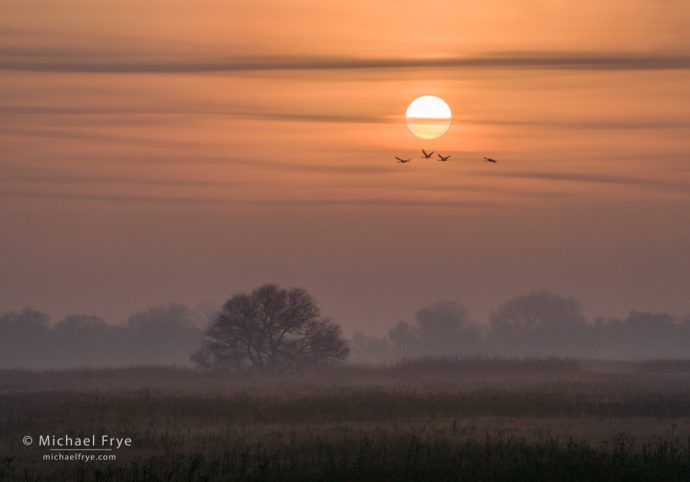
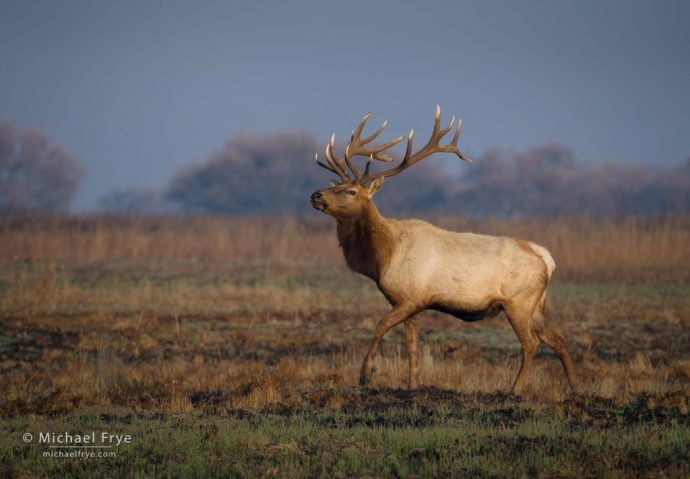
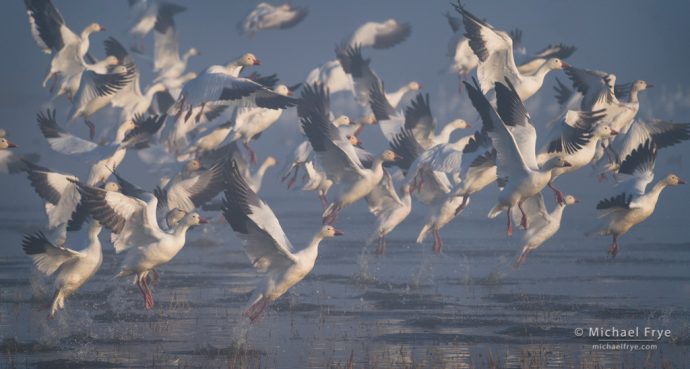
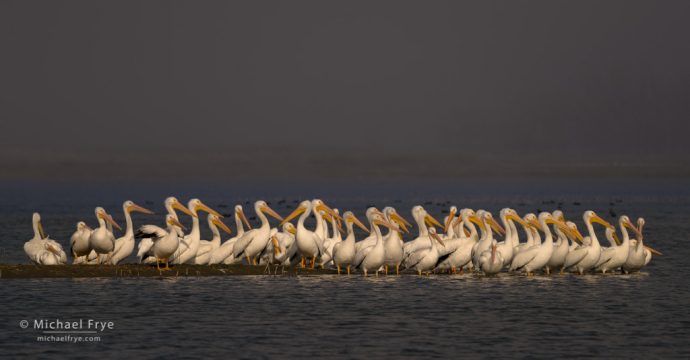
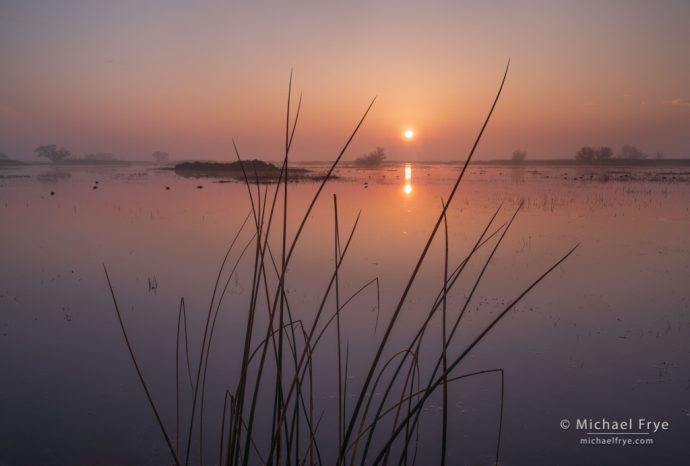
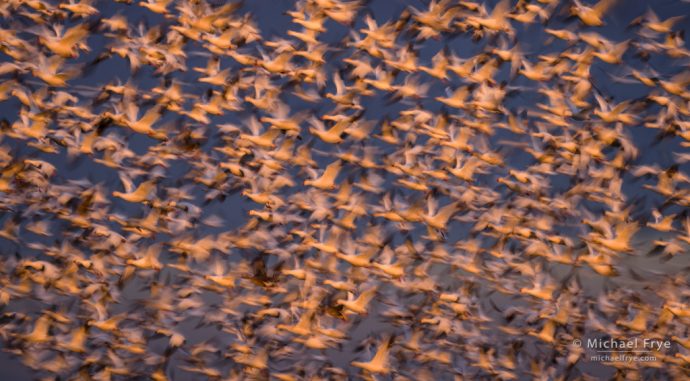
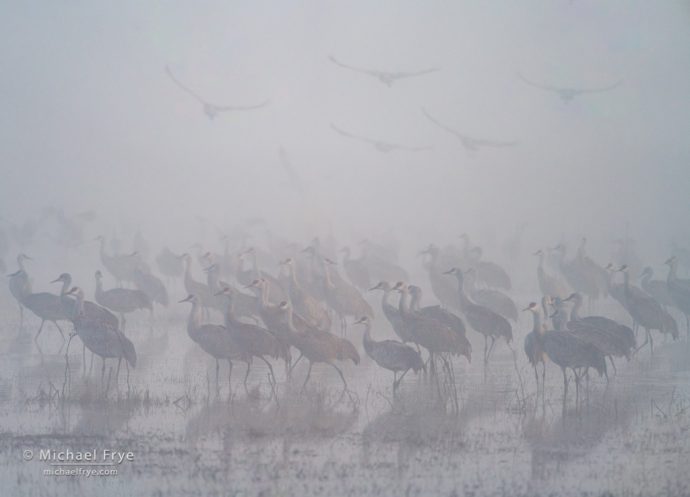
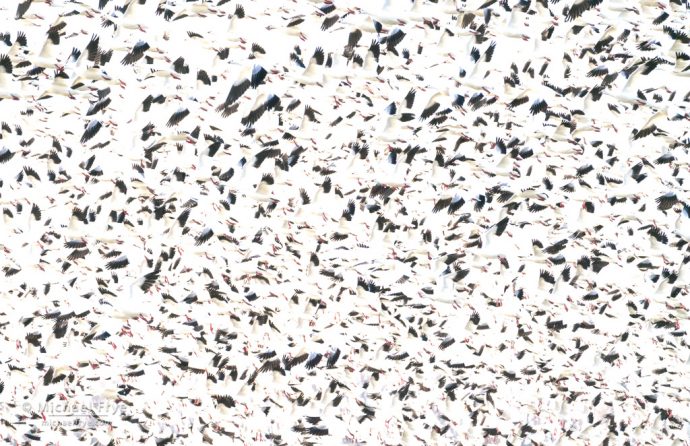








Such beauty and diversity in your stunning images. The image at the top is simply gorgeous, Michael, thanks so much.
Hi Michael,
The cranes are also amazing there. Seeing that many at once and flying in packs is so amazing. And you are so right, seeing thousands of geese launching into the air at the same time is just awesome.
We found the area quite a few years ago thanks to some of your posts.
Thanks as always for encouraging us to step outside our boxes and find new places.
Each piece represents A Bundle of Joy created by
God Almighty – The One & Only. Thank You for Sharing, Michael.
The images in your new Central Valley portfolio are truly stunning and inspiring, Michael. Thank you.
yes, is it inevitable that photographers make mistakes. But it is encouraging to read that even the true expert professional photographers make mistakes. Thanks for giving us hope Michael 🙂